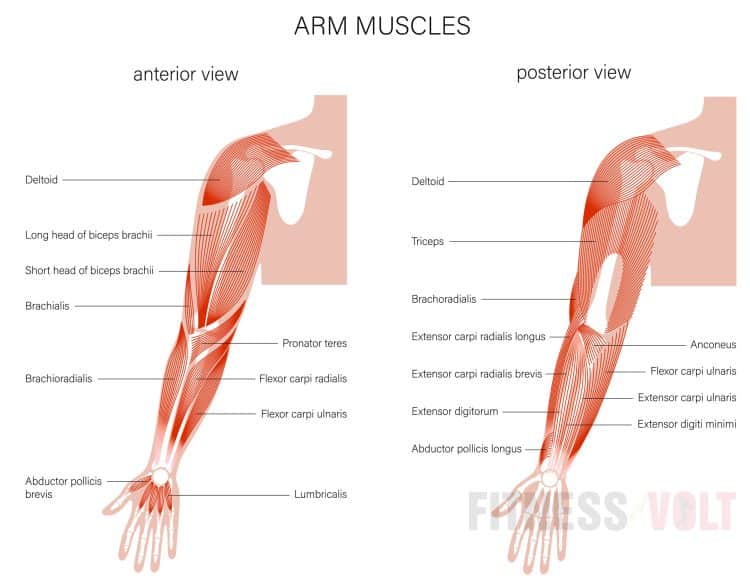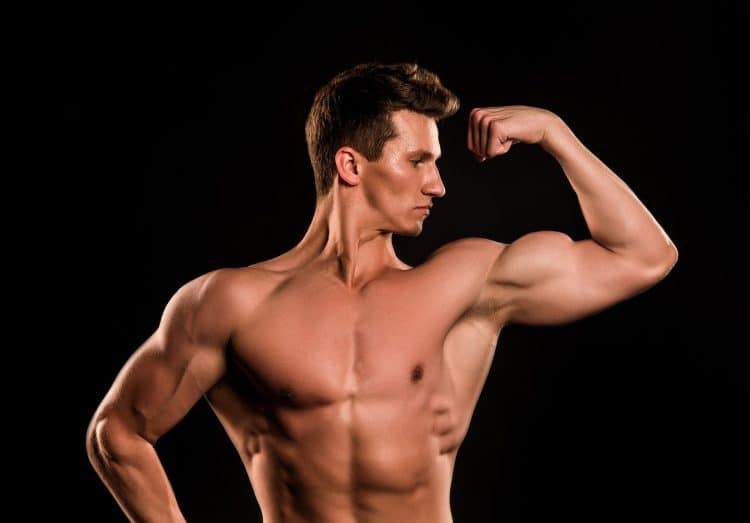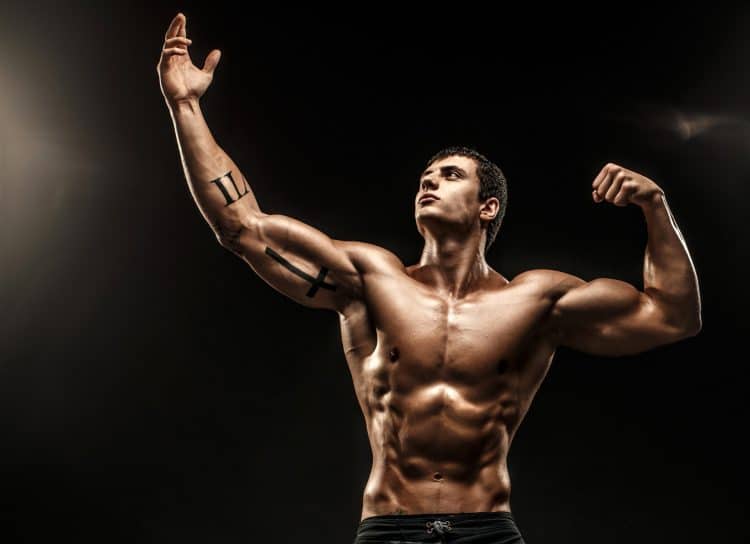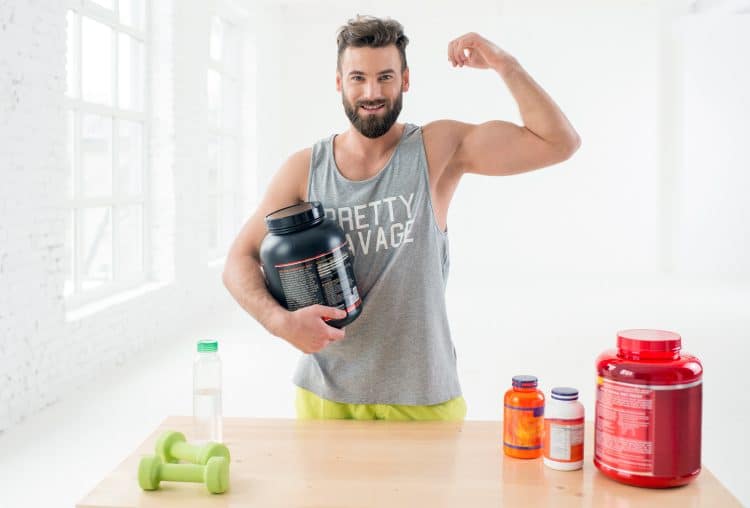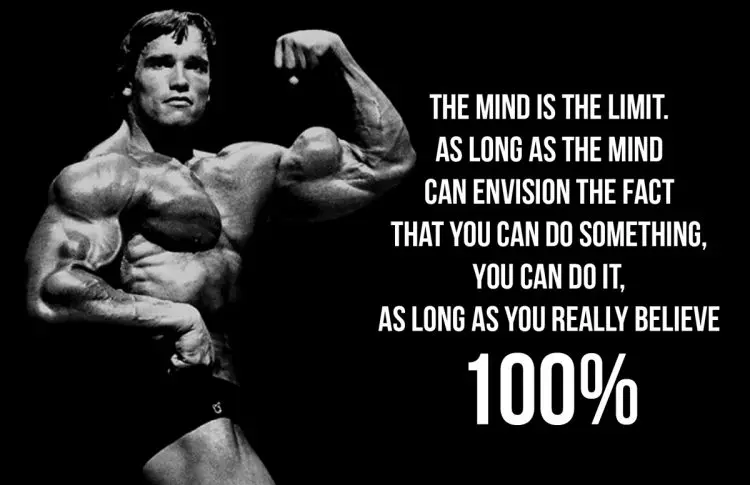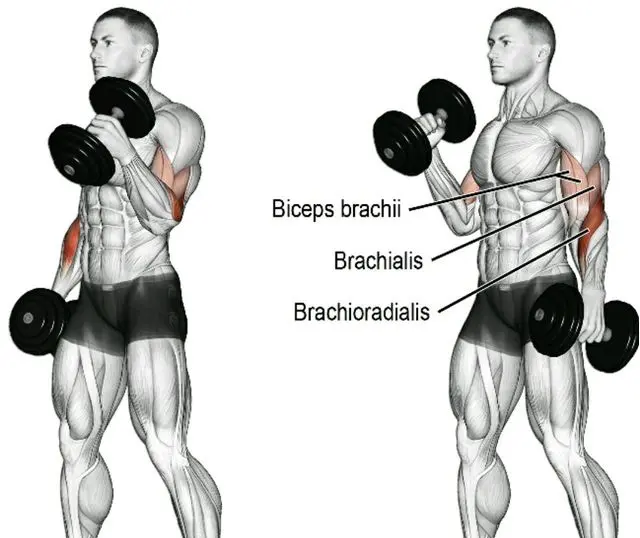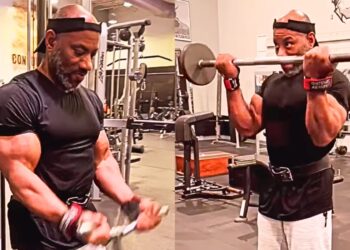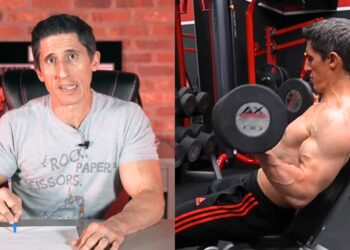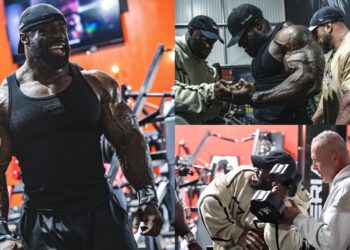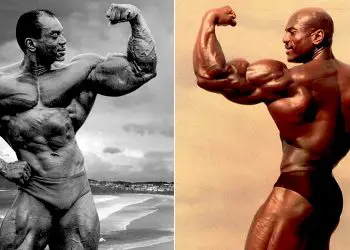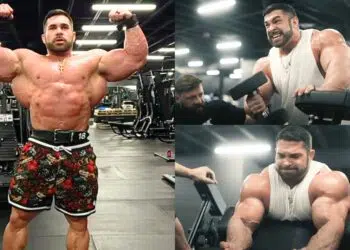Legendary playwright William Shakespeare once said, “show me a bodybuilder who doesn’t want bigger arms, and I’ll show you a liar.”
Okay, so the legendary British bard DIDN’T actually say that, but it still holds true. Just about everyone who lifts weights wants bigger, stronger, shapelier, more muscular arms. And yet, despite doing loads of sets of curls and pushdowns, many lifters are dissatisfied with their arm development and have got tiny peashooters instead of massive, high-caliber guns.
If your arm workouts are failing to produce the results you want, it’s time to try a different approach to training your biceps and triceps.
In this article, we reveal the best arm workouts for all goals and levels of experience.
Anatomy 101: Getting to Know Your Arms
While you don’t need a degree in functional anatomy to build a show-stopping pair of arms, understanding how your muscles work is often helpful for choosing the best exercises for your training goal.
Level Up Your Fitness: Join our 💪 strong community in Fitness Volt Newsletter. Get daily inspiration, expert-backed workouts, nutrition tips, the latest in strength sports, and the support you need to reach your goals. Subscribe for free!
That said, if a bunch of old Latin words really don’t interest you, feel free to skip this section.
The main muscles that make up your arms are (1):
Biceps brachii
Usually known simply as the biceps, this is probably the most well-known muscle in the human body. Even non-lifters know where their biceps are. The biceps has two origin points and one common insertion and is responsible for flexing your elbow and supinating your forearm. It also plays a part in the flexion of the shoulder joint.
Brachioradialis
The brachioradialis is partly an upper arm and partly a forearm muscle. Running along the thumb side of your upper forearm, it works with the biceps to flex your elbow and also extends your wrist. Beefing up the brachialis will give your lower arms that much-desired bowling pin look.
Brachialis
The brachialis is a small but essential muscle located beneath your biceps. It’s a powerful elbow flexor and also helps prop your biceps to make them look bigger. In fact, because of its favorable mechanics, the brachialis is the strongest elbow flexor, despite being relatively small.
Triceps brachii
Where the biceps have two origin points and heads, the triceps have three. Located on the back of your upper arm, the triceps are responsible for elbow extension and shoulder extension. Contrary to what a lot of people think, the triceps is actually the largest of your two main arm muscles.
Anconeus
Not many people have heard of the anconeus. That’s not really surprising, given that it doesn’t add much to your arm size, and it’s not usually visible. The anconeus is a small muscle located at the posterior aspect of the elbow. It works with the triceps to extend and stabilize the elbow joint.
Forearms
In addition to the brachioradialis, there are several more muscles that make up your forearms. Some are flexors, while others are extenders. Some forearm muscles only affect your wrist joints, while others control your fingers.
There is no need to differentiate between wrist and forearm muscles as they all work together whenever you grip and move your wrists. However, if you want big forearms to match your muscular biceps and triceps, forearm training (flexion and extension) is a must.
Why Train Your Arm?
This question may seem somewhat redundant, but believe it or not, some people (and even a few fitness experts) do not believe in direct arm training. Instead, they think that things like push-ups and pull-ups are all you need to build great arms.
And while the arms are undoubtedly involved in all pushing (triceps) and pulling (biceps) exercises, there are plenty of benefits to hitting them with some direct exercises like curls and pushdowns.
So, why train your arms?
Muscle size
Muscles don’t grow on trees. In fact, muscles don’t grow at all unless you train them with plenty of volume, intensity, and frequency. So, if you are a bodybuilder, that means you need to pay as much attention to your arms as you do your chest, back, shoulders, and legs.
Also, while things like chin-ups and dips CAN help you build more muscular arms, if you want to take your arm development to the next level, you’ll need to hit them directly. No one wants “okay” looking arms. Instead, they want GREAT arms, and that means training them like you mean it.
Plus, is there anything better than a good arm pump?
Strength and performance
As the old saying goes, a chain is only as strong as its weakest link. In most pulling and pushing exercises, that potential weak link is your arms. So, for example, if, during pull-ups, your biceps fail before your lats, your back workout won’t be as productive as it should be.
The same is true for your triceps during most pushing exercises. If your triceps fail during bench presses, your pecs won’t get such a good workout. Increasing arm strength could mean you can lift more weight in your other exercises, making your workouts much more productive.
In addition, the arms play an essential part in many sports, from rock climbing to judo to throwing the javelin to football to basketball. They might be relatively small, but the arms are a big part of sports performance. So, it’s no coincidence that athletes often have very well-developed arms, even though they may not care much about muscle size.
Everyday functionality
Even if you aren’t a bodybuilder or don’t play sports, stronger, more muscular arms can be advantageous. Strong arms will make it easier to carry out the trash, pick up your kids, open jars, and do chores and tasks around the house, like using a screwdriver or hammer.
Train your arms, and you’ll never need to ask for help to open a peanut butter jar again!
Best Arm Workouts
There are lots of arm workouts to try, but many of them won’t produce good results, and some are nothing but a waste of time and energy. That’s because they fail to adhere to the principles that make your workouts productive.
Some workouts are far too long and voluminous, while others are too short or infrequent. And while any arm workout is better than no arm workout, it makes sense to get the most from your training time and energy by following a smart program.
Studies suggest that you’ll get the best results from your arm workouts if your workouts meet the following criteria (2):
- Volume – you should accumulate 10-20 sets of training per muscle group per week to achieve optimal results. Most sets should be done in the 6-35 rep range for muscle growth and the 1-5 rep range for strength.
- Intensity – sets should be taken to within 1-3 reps of failure. The higher the reps, the closer to failure you need to get.
- Frequency – muscles respond best to 2-3 moderate-length workouts per week rather than one long workout, with 48-72 hours between sessions.
- Recovery – rest 1-3 minutes between sets. Shorter rests may reduce workout volume and, therefore, effectiveness. However, occasional shorter rests maybe useful for variety.
- Exercises – use a mixture of compound and isolation exercises.
Read more about the hierarchy of successful strength training here.
1. Arm Workout for Beginners
If you are new to arm training, the good news is that you don’t need a long, complicated workout to build stronger, more muscular arms. So, enjoy your “newbie gains” and follow a simple biceps and triceps workout that requires minimal equipment.
| No | Exercise | Sets | Reps | Rest |
| 1 | EZ bar biceps curl | 2 | 8-10 | Rest 90 seconds between sets |
| 2 | EZ bar skull crusher | 2 | 8-10 | Rest 90 seconds between sets |
| 3 | Cable biceps curl | 2 | 12-15 | Rest 60 seconds between sets |
| 4 | Cable triceps pushdowns | 2 | 12-15 | Rest 60 seconds between sets |
Tips:
- Do this workout 1-2 times per week.
- Focus on perfecting your technique before lifting more weight.
- Do each rep slowly, smoothly, and with control to keep your muscles under tension for longer and maximize the mind-muscle connection.
2. Arm Workout for Size
Training for muscle size requires a combination of volume, intensity, and muscle tension. It’s also best achieved by combining various training methods to stimulate maximal muscle growth. However, such a training approach is unsuitable for beginners, so only do this workout if you’ve been lifting for a year or longer.
| No | Exercise | Sets | Reps | Rest |
| 1 | Barbell curl | 3 | 6-8 | Rest 2 minutes between sets |
| 2 | Dumbbell incline curls | 3 | 8-10 | Rest 90 seconds between sets |
| 3 | Concentration curls | 3 | 12-15 | Rest 60 seconds between sets |
| 4 | Close grip bench press | 3 | 6-8 | Rest 2 minutes between sets |
| 5 | Dumbbell French press | 3 | 8-10 | Rest 90 seconds rest between sets |
| 6 | Single-arm cable pushdown | 3 | 12-15 | Rest 60 seconds between sets |
| 7 | Wrist curls | 2 | 10-12 | Rest 90 seconds between sets |
| 8 | Reverse wrist curls | 2 | 10-12 | rest 90 seconds between sets |
Tips:
- Make your workout more intense by doing drop sets at the end of each exercise.
- Contract your muscles as hard as possible at the mid-point of each rep for a more demanding workout.
- Save time by performing the last two exercises as a back-to-back superset.
3. Cable Machine Arm Workout
The great thing about cable exercises is that they keep your muscles under constant tension. Cable exercises also tend to be very joint-friendly. This workout uses light to moderate weights and medium to high reps to produce a skin-splitting pump.
| No | Exercise | Sets | Reps | Rest |
| 1 | Cable biceps curl | 3 | 10-12 | 90 seconds rest between sets |
| 2 | Cable triceps pushdown | 3 | 10-12 | 90 seconds rest between sets |
| 3 | Cable reverse grip curl | 3 | 12-15 | 60 seconds rest between sets |
| 4 | Cable reverse grip pushdown | 3 | 12-15 | 60 seconds rest between sets |
| 5 | Cable Bayesian curl | 2 | 15-20 | 45 seconds rest between sets |
| 6 | Cable triceps kickbacks | 2 | 15-20 | 45 seconds rest between sets |
Tips:
- Experiment with different handles and grips to hit your muscles from a variety of angles.
- Cable machines are ideal for drop sets, so feel free to do some at the end of your workout.
- Save time by supersetting the biceps and triceps exercises.
4. Arm Workout for Strength
The best way to train for strength is with low reps and heavy weights – typically 3-5 reps and 85% or more of your one repetition maximum.
However, this may not be practical for some arm exercises, as there will be too much stress on your joints. So, if you want stronger arms, it’s best to build your workouts around compound training followed by some moderately heavy arm isolation exercises.
| No | Exercise | Sets | Reps | Rest |
| 1 | Weighted dips | 4 | 4-6 | Rest 3 minutes between sets |
| 2 | Weighted close-grip chin-up | 4 | 4-6 | Rest 3 minutes between sets |
| 3 | Dumbbell hammer curls | 3 | 6-8 | Rest 2 minutes between sets |
| 4 | Close grip bench press | 3 | 6-8 | Rest 2 minutes between sets |
| 5 | Kettlebell farmer’s walk | 2 | 20 yards | Rest 2 minutes between sets |
Tips:
- Avoid training your chest or back the day before or after this workout, as your performance will probably be affected.
- Wear elbow sleeves and wrist wraps to protect your joints.
- Lower the weights slowly but lift them explosively for best results.
5. Arm Workout for Athletes
Most athletes don’t care about how jacked their arms are. Instead, they want arms that are strong and functional, so they can punch, push, or throw harder. As such, this workout contains a few unusual exercises that are designed to increase functional strength and muscle size.
| No | Exercise | Sets | Reps | Rest |
| 1 | Towel grip pull-up | 4 | 6-8 | Rest 2 minutes between sets |
| 2 | Thick bar close grip bench press | 4 | 6-8 | Rest 2 minutes between sets |
| 3 | Power curl | 3 | 8-10 | Rest 90 seconds between sets |
| 4 | Plyo push-up | 3 | 8-10 | Rest 90 seconds between sets |
| 5 | Thick bar deadlift hold | 3 | 30-40 seconds | 90 seconds rest between sets |
Tips:
- Focus on increasing weights and/or reps every week or two to improve muscular performance.
- Wrap your bar in a towel if you do not have access to a thick barbell.
- Use chalk on your hands for a better grip and a more effective workout.
6. Bodyweight/Resistance Band Arm Workout
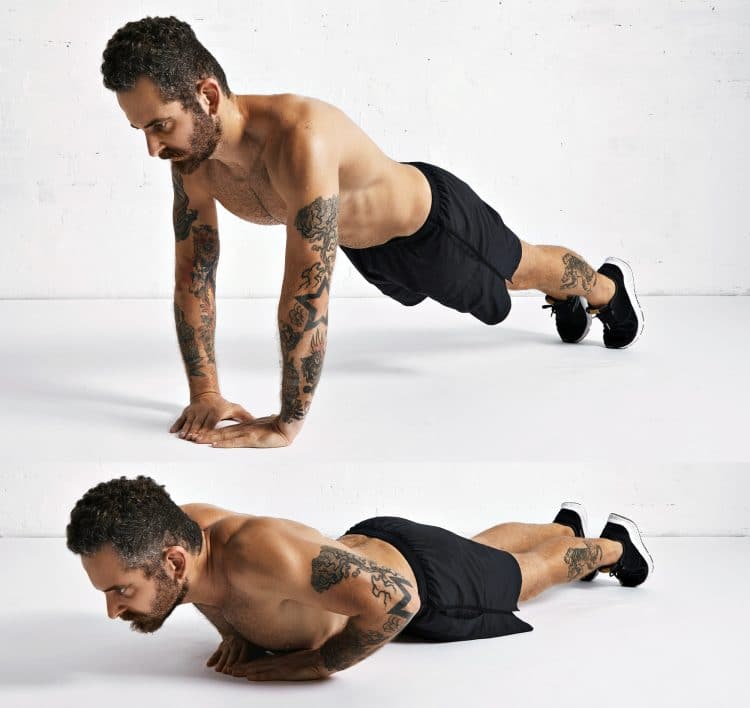
No weights? No machines? No problem! Here’s a workout you can do anywhere and anytime using your body weight and some light and portable resistance bands. This workout is ideal for travelers and home lifters.
| No | Exercise | Sets | Reps | Rest |
| 1 | Chin-up | 2 | 8-10 | Rest 2 minutes between sets |
| 2 | Bench dips | 2 | 8-10 | Rest 2 minutes between sets |
| 3 | Resistance band biceps curl | 2 | 10-12 | Rest 90 seconds between sets |
| 4 | Resistance band pushdown | 2 | 10-12 | Rest 90 seconds between sets |
| 5 | Resistance band concentration curl | 2 | 12-15 | Rest 60 seconds between sets |
| 6 | Diamond push-ups | 2 | 12-15 | Rest 60 seconds between sets |
Tips:
- Check your bands for wear and tear to ensure that they won’t break during use.
- Use your bands for assistance if you can’t do many chin-ups. Alternatively, you can do lat pulldowns with bands.
- Stretch the bands out more to increase the difficulty of your workout. Or, you can use multiple bands to make your workout harder.
How to Warm Up for an Arm Workout
Warming up is an integral part of working out. Your warm-up prepares your muscles, joints, and nervous system for what you are about to do. This should help lower your risk of injury, minimize delayed onset muscle soreness, and make your workout more productive.
But how should you warm up before training your arms? The answer is – it depends!
If you are training your arms at the end of a chest, back, or shoulder workout, you probably don’t need to spend much, if any, time warming up, as the preceding exercises will have done the job for you. Warming up will probably just be a waste of valuable energy.
But, if you are only training your arms and you’ve done nothing beforehand, a thorough warm-up means you’ll be able to give your workout your all and get better results from your training.
So, how do you warm up for an arm workout?
In general, you need to perform the following:
- A pulse raiser – this is the part of the warm-up that makes you warm. It usually consists of 5-10 minutes of easy cardio, preferably using an exercise that involves your arms, e.g., a rower or an air bike.
- Mobility exercises – these movements ensure your joints are lubricated and ready to do and includes things like shoulder rolls, wrist rolls, and elbow flexion/extension. You may also want to mobilize your spine.
- Dynamic flexibility exercises – unlike static stretches, dynamic stretches involve large, smooth movements to increase flexibility and tissue elasticity. However, you won’t need to spend long stretching your arms as they probably won’t be particularly tight.
Read more about warming up for strength training here.
Alternatively, try this short but effective warm-up routine:
- 5 minutes rowing, cross trainer, air-bike, or jump rope
- Band pull-aparts – 3 sets 15 reps
- Dumbbell wrist rotations – 3 sets 15 reps
- Dumbbell curl and press – 3 sets 15 reps
Remember – this is your WARM-UP! Use light weights and stop each set well short of failure. Speed things up by doing the exercises as a circuit, i.e., one set each of band pull-aparts -> dumbbell wrist rotations -> dumbbell curl and press repeated three times.
A Word About Nutrition
It doesn’t matter how hard you train; if your diet sucks, your progress will never be as good as it should be. The food you eat provides the energy and nutrients you need to train, recover, and grow. Shortchange your diet, and your body won’t have the resources it needs.
It’s beyond the scope of this article to provide you with a muscle-building diet, but we can give you a few pointers to ensure your diet won’t undermine your results.
Protein intake
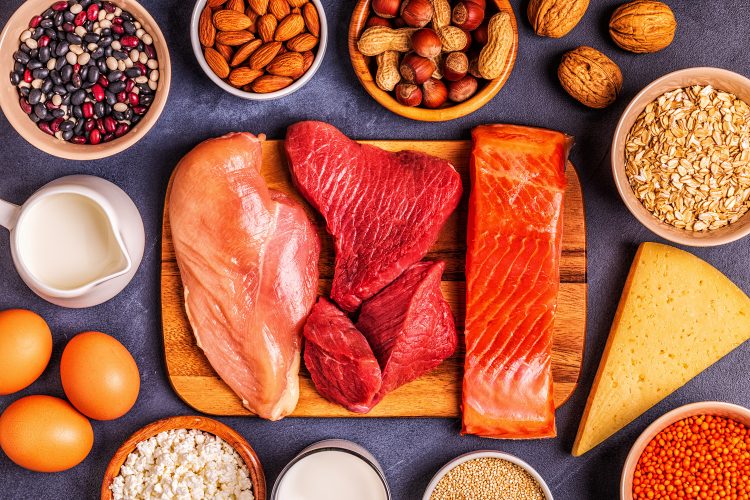
Protein contains amino acids, which are the building blocks of muscle growth. Consuming too little protein could stop your progress dead in its tracks. Most lifters should consume about one gram of protein per pound of body weight.
Alternatively, you can precisely determine your needs with this easy-to-use protein intake calculator.
Eat complex carbohydrates
Complex carbohydrates are carbs made from long chains of sugar molecules called polysaccharides. Also known as starches, complex carbs are healthy, contain fiber, vitamins, and minerals, digest slowly to give you lasting energy, and keep you feeling fuller for longer.
Good complex carb choices include:
- White and sweet potatoes
- Vegetables
- Brown and wild rice
- Wholegrain bread
- Brown pasta
Carbohydrates should make up 45-65 percent of your total calorie intake.
Healthy fats

A lot of people demonize dietary fats, but, actually, they are vital for health, hormone regulation, and performance. So, while it’s best to minimize your intake of processed and trans fats, natural fats are very good for you.
On the downside, fats are very high in calories, containing nine per gram, but a little goes a long way, so you don’t need to consume all that much.
Good fat choices include:
Level Up Your Fitness: Join our 💪 strong community in Fitness Volt Newsletter. Get daily inspiration, expert-backed workouts, nutrition tips, the latest in strength sports, and the support you need to reach your goals. Subscribe for free!
- Nuts, nut butters, and nut oils
- Olive oil
- Oily fish
- Real butter
- Full-fat milk
- Seeds and seed oils
- Red meat
- Coconut oil
Fats should make up 15-20 percent of your total calorie intake.
Calorie balance
The energy in food is measured in calories. To build muscle, you need a calorie surplus, which means you must consume slightly more food than you need to maintain your current weight.
In contrast, to lose weight and burn fat, you need a calorie deficit. This means consuming slightly fewer calories than you need to maintain your current weight.
The relationship between your calorie intake and your calorie expenditure is called your calorie balance.
Adjust your food intake according to your body composition goal. For example, eat more to gain weight and build muscle or less to burn fat and lose weight.
Read more about eating for weight loss here and eating for muscle gain here.
Supplements
While you don’t have to use supplements to build muscle and get stronger, there are some products that may be useful. For example, supplements can help you train harder and longer, recover better between workouts, or improve your general health to enhance the muscle-building process.
Good options include:
- Creatine – for energy and muscle building
- Pre-workouts – for fast-acting energy and better workouts
- Protein powder – for recovery and muscle growth
- BCAAs and EAAs – for recovery and muscle growth
- ZMA – for better sleep and hormone optimization
However, it’s important to remember that even the best supplements won’t help if you aren’t training hard, eating right, and getting plenty of sleep.
What not to eat
What you don’t eat is every bit as important as what foods you include in your diet. Poor food choices can hurt your progress, even if the rest of your diet is pretty good. While you don’t have to ban any food from your diet, things that could impede your progress and are best consumed in small, infrequent amounts include:
- Processed and highly refined foods
- Foods that contain added sugars
- Sweets, candy, and other refined simple sugars
- Soda
- Foods that contain lots of artificial additives and chemicals
- Alcohol
Tips for Building Bigger, Stronger Arms
Get the most from every rep, set, exercise, and workout with these tried-and-tested training tips!
1. Use isolation and compound exercises
When it comes to arm training, a lot of lifters head straight for the isolation exercises and fill their workouts with things like curls and pushdowns. And while there is nothing wrong with isolation exercises, they are not the only way to build arm muscle size and strength.
Most people will get better results by combining isolation exercises with compound movements. Exercises like dips and close grip push-ups are awesome strength and muscle-builders for the triceps, while pull-ups and chin-ups will do the same for your biceps.
So, don’t rely exclusively on isolation exercises to build your arms. Instead, combine them with some well-chosen compound movements for even better results.
2. Focus on progressive resistance
You are only as strong as your last workout. If you use the same weights for the same reps and sets every time you train, your progress will soon stall. However, if you want to continue getting stronger and building muscle, your workouts must gradually get harder, which is called progressive resistance.
With progressive resistance, you do your best to lift a little more weight or do an extra rep or two each time you work out. This gradual increase in workout difficulty will ensure that your muscles continue to get stronger and bigger.
3. Strengthen your mind-muscle connection
It’s almost impossible to increase muscle size and strength if you can’t control the muscles you’re training or feel them working. Bodybuilders call this the mind-muscle connection. Ways to improve your mind-muscle connection include:
- Flexing your biceps and triceps before and between workouts.
- Performing mid-rep pauses.
- Using a lower lifting and lowering tempo.
- Doing isometrics.
- Looking at the muscle you are training.
You can read more about how to develop a stronger mind-muscle connection here.
4. Use good form – always!
There are two ways to perform most exercises – the right way and the wrong way. The right way is easy on your joints and keeps the tension on your muscles. It produces the best possible results with the lowest risk of injury, even if it means that you need to use a little less weight.
The wrong way may allow you to use heavier weights, but some of that weight will land on muscles you aren’t supposed to be working. It may also increase your risk of injury.
There IS a time and a place for a little strategic cheating, so you can squeeze out an extra rep or two past failure. However, most of the time, good form is the way to go.
5. Train your biceps AND your triceps equally
The biceps are the most famous muscle in the human body. Because of this, when it comes to arms training, many people tend to focus on that muscle. However, the triceps are actually the bigger of the two arm muscles, so they need at least as much attention if you want to develop great-looking arms.
So, to build your best-ever arms, make sure you train your biceps and triceps equally. You could even do a few extra sets for your triceps, as they contribute a little more to your upper arm size.
6. Avoid overtraining
If a little arm training is good, more must be better, right?
While it’s good to want to train your arms hard and often, it’s important to understand that you can have too much of a good thing, and doing more arm training could actually inhibit your progress.
Training too hard or too often can lead to overtraining, which is where your workouts exceed your ability to recover.
Symptoms of overtraining include:
- Joint pain
- Getting weaker instead of stronger
- Frequent illness
- Disrupted sleep
- Loss of appetite
- Muscle loss/weakness
If your progress has stalled or it’s going backward, you could be overtrained. Take some time off, rest and recover, and then return to training by doing less volume and fewer workouts.
When it comes to arm training, more is not always better! Read more about overtraining here.
7. Train hard, rest harder
What training takes out of your body, rest and sleep put back in. If you fail to provide your body with the rest it needs, your progress will be slow or even nonexistent. So, make sure you get around 7-9 hours of sleep per night, don’t overdo the cardio, and avoid filling your workouts with a bunch of junk volume.
In addition, make sure you pay attention to your diet so your body gets the nutrients needed for energy, recovery, and muscle growth.
If you are training hard but not seeing much in the way of muscle growth, you probably need to pay more attention to rest and recovery.
Arm Training FAQs
Do you have a question about arm training? No sweat; we’ve got the answers you seek!
1. What are some of the best exercises for bigger arms?
There are dozens (if not hundreds) of exercises you can use to build bigger, more muscular arms, and many of them are interchangeable. That said, some of our favorite (and the best!) include:
Biceps:
- Dumbbell curls
- Barbell curls
- Cable curls
- Hammer curls
- Reverse curls
- Preacher curls
- Spider curls
- Close-grip chin-ups
Triceps:
- Triceps pushdowns
- Rope pushdowns
- Skull crushers
- Overhead extensions
- Close-grip bench press
- Parallel bar dips
- Diamond push-ups
- Cable kickbacks
2. What is the best way to structure an arm workout?
This is a tricky question to answer because there are so many options to choose from! For example, you could do 2-3 biceps exercises followed by 2-3 triceps exercises.
Or, you could alternate between biceps and triceps exercises using a sort-of push-pull sequence. You can start your workout with compound exercises and then move on to isolation exercises or do things the other way around.
However, it’s generally best to train forearms last, as working them first could impede your performance of the rest of your workout.
Experiment with a few different training approaches to determine which works best for you. Alternatively, just do one of the workouts you’ll find elsewhere in this article.
3. What are the best home exercises for more muscular arms?
Dumbbells, resistance bands, and body weight exercises are the best options for home arm training. Using these modalities, you should have no problem building bigger, stronger arms.
Because you probably won’t have a lot of weight to train with, the most important thing is to ensure you take all of your sets to within a couple of reps of failure. This will challenge your muscles so they get bigger and stronger. Easy workouts won’t get the job done.
So, use whatever tools you’ve got to replicate the exercises and workouts described in this article.
4. Can you build bigger arms without training the rest of your body?
It’s rarely a good idea to train just one or two body parts and leave the rest of your muscles undeveloped. So, while you COULD train your arms and skip the rest of your body, it’s not something we recommend. For a start, your arms will look pretty weird if they’re hanging from narrow shoulders and your chest and back are small.
So, by all means, emphasize your arms, but don’t neglect the rest of your body. As well as creating a more aesthetically pleasing physique, this will probably enhance your arm workouts.
5. How soon will your arms start to grow once you start training them properly?
Beginners tend to increase muscle size and strength pretty quickly. If you are new to working out, you should see improvements in your appearance and strength within a few weeks. However, your rate of progress will also depend on your diet and how you manage things like rest and recovery.
More experienced lifters tend to gain muscle more slowly, as they’re already quite close to their muscular genetic potential.
6. What is the best way to build bigger arms naturally?
The most important training principle for building muscle naturally is consistency. One workout won’t do it, and even month of training probably won’t produce the results you want. Instead, you need to hit the gym several times a week, every week, for months or even years at a time.
Even the best arm workouts won’t work if you don’t do them consistently.
So, the best way to build bigger arms naturally is to not skip workouts. Commit to your training, work hard, eat right, get plenty of sleep, and your arms WILL grow!
7. Can I train my arms every day?
Just because you can do something doesn’t mean you should. Your muscles grow when you are resting, and that means it’s a bad idea to train your arms every day. At most, you should train them every other day to allow time for rest, recovery, and growth.
However, for most people, two arm workouts per week should be enough, leaving plenty of time to train the rest of your body.
Best Arm Workouts – Final Thoughts
Whatever you are training for, the right arm workout will help you achieve the results you want. Because of the fitness law of specificity, your body adapts to the type of workout you do, so your training should always match your goals.
With six different workouts and lots of handy tips and tricks at your disposal, you now have everything you need to build the arms of your dreams.
Use the information in this article to build strong, muscular arms!
References:
1. KENHUB: Arm Muscles https://www.kenhub.com/en/library/anatomy/arm-muscles
2. PUBMED: The Influence of Frequency, Intensity, Volume and Mode of Strength Training on Whole Muscle Cross-Sectional Area in Humans https://pubmed.ncbi.nlm.nih.gov/17326698/

